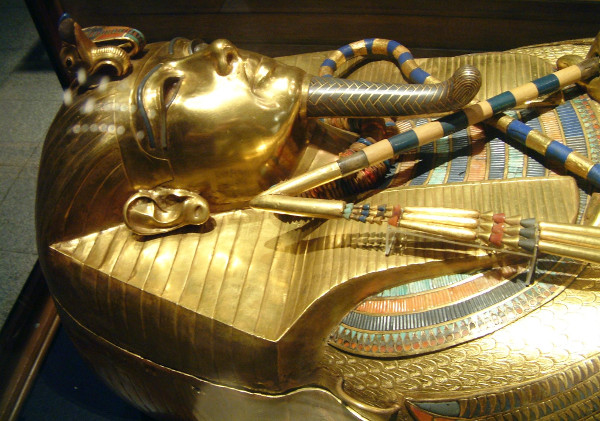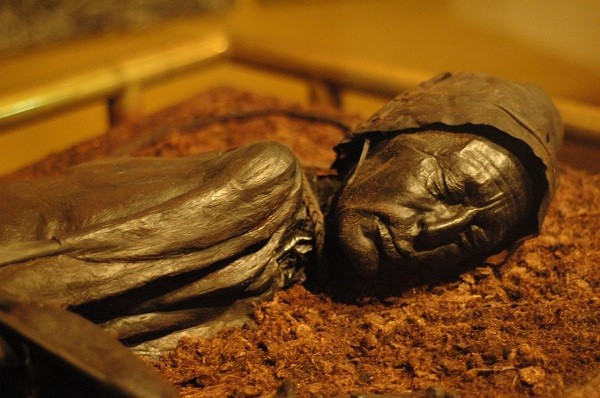Mummification techniques in the world
Using peat swamp, shark liver oil or chemical tank, many communities around the world have developed ways to mummify to keep the body alive for years.
Popular mummies in the world
According to IFL Science, the custom of embalming dead bodies is not only common in places with hot and dry environments like in ancient Egypt. Recent research indicates that communities living in cold and wet areas in Northern Europe during the Bronze Age also mummified. Evidence suggests that the Bronze Age dead body in this area was quickly processed after the person died and was preserved on the ground for at least several decades.

Mummies are usually stored in hot and dry environments like in ancient Egypt.(Photo: Wikipedia).
However, the Nordic people did not follow a fixed embalming method. According to Dr. Tom Booth at the Museum of Natural History, London, England, who conducted the study, they used everything available to preserve corpses like smoked fire groups or take advantage of acidic peat bogs.
Peat bogs across Northern Europe from Ireland to Estonia provide perfect conditions to preserve organic objects. High acidic water, anaerobic and cold environment in marshes prevents bacterial growth as well as decomposition of the dead, helping to preserve the body in the shape of life. People of the Bronze Age used these characteristics to embalm.

Tollund Man, mummy found in a swamp in Denmark.(Photo: Herald News).
New Zealand Aboriginal Maori practice the preservation of the mummy's head , called 'Mokomokai'. They often keep the heads of their relatives, or enemy tribal chiefs. First, they removed the brain and eyes from the head of the corpse, then used stitches in the mouth, eyes and sealed with sap. Finally, they rub the shark liver oil on the level heads. "Ta moka" tattoos on the face of the dead are preserved and their heads remain the same as before.
Mummification continues in modern times. In the city of Heidelberg, Germany, Gunther von Hagens established the Institute of Plasticisation in 1993, specializing in impregnating plastic bodies for preservation for medical and educational purposes.

A body is treated by the process of asphalt.(Photo: NationalMultimedia).
This process was developed by von Hagens as an anatomy assistant and included many steps. The first step is to inject formalin antiseptic through arteries and dissect the body. Fat and water are then removed from the body by soaking the body in an acetone tank. This chemical drains and replaces every fluid in the body's cells.
Next, the body is transferred to a liquid plastic tank like expoxyresin or silicone rubber and placed in a vacuum chamber. The vacuum environment makes the acetone in the cell boil and evaporate, so that liquid plastic can spill into the body. At the end, the bodies are placed in the desired position and hardened with heat or UV rays.
- Learn about mummification techniques
- Decode tricks of mummification from the Bronze Age
- Reveal the process of embalming the Korean leader
- How does Japanese monk self-mummify?
- The first person to embalm like the Egyptian king
- Learn how to marinate pet carcasses in ancient Egyptian style
- Diagnosis of 4,000-year-old mummy
- Mummification technology has a life of nearly 6 millennia
- Another amazing thing about ancient Egyptian civilization
- The oldest mysterious mummy 3000 years old revealed a method of mummification in the UK
- Affirm the belief of reincarnation
- Detecting the method of embalming the remains of the Egyptian organs
 'Fine laughs' - Scary and painful torture in ancient times
'Fine laughs' - Scary and painful torture in ancient times The sequence of numbers 142857 of the Egyptian pyramids is known as the strangest number in the world - Why?
The sequence of numbers 142857 of the Egyptian pyramids is known as the strangest number in the world - Why? Miracle behind the world's largest stone Buddha statue
Miracle behind the world's largest stone Buddha statue What is alum?
What is alum?